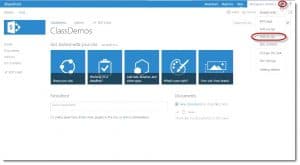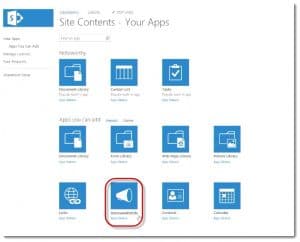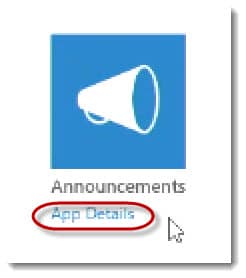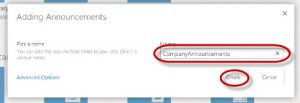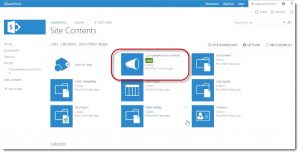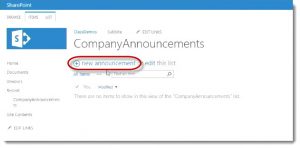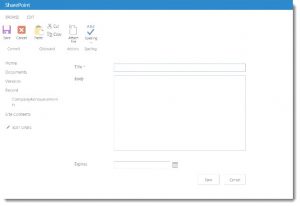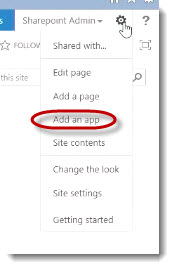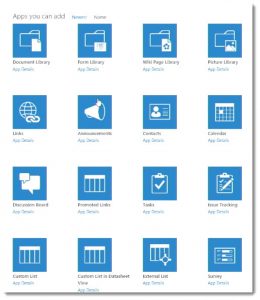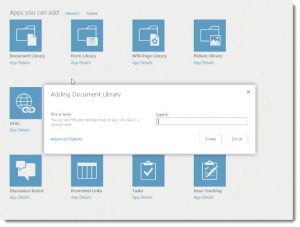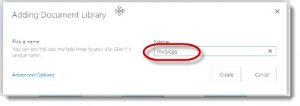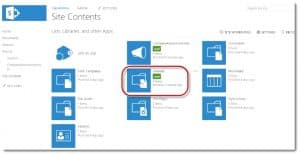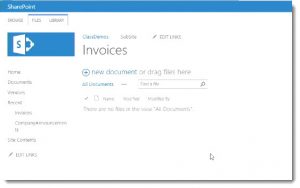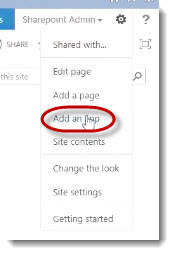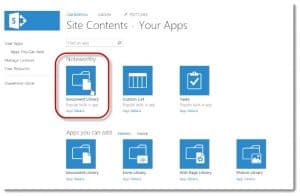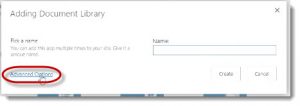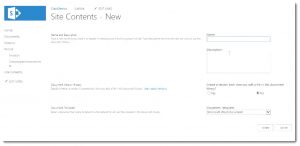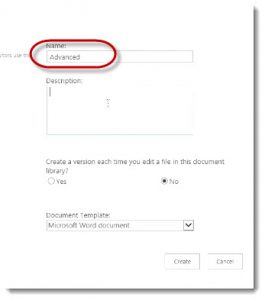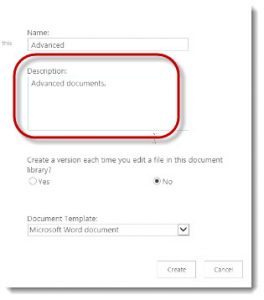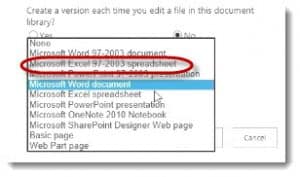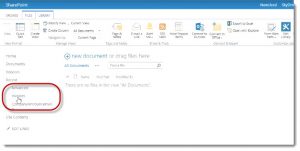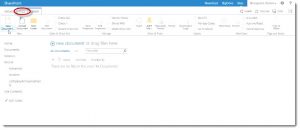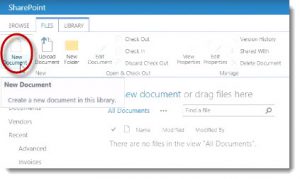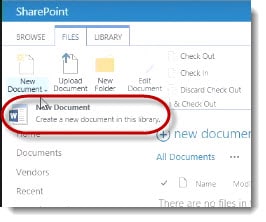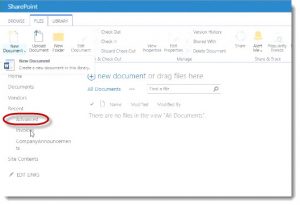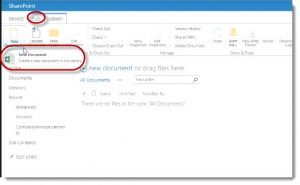Creating Lists and Libraries in SharePoint
Creating Lists and Libraries in SharePoint
For more SharePoint training videos in this series, see:
Part 1 – Using Navigation Controls in a Collaboration Site in SharePoint
Part 2 – Using Navigation Controls in a Publishing Site in SharePoint
Part 3 – Configuring SharePoint Navigation in a Publishing Site – Activating the Publishing Feature
Part 4 – How to Configure Navigation in SharePoint Publishing Sites
Part 5 – Managing Lists and Libraries in SharePoint – An Overview
Part 6 – » Creating Lists and Libraries in SharePoint «
Video Transcription
In this SharePoint training video, we’re going to cover creating Lists and Libraries.
Now, we want to go back to our hierarchy of objects. We’re going to start at the Site Collection level. That’s where we want to make sure we’re in the right Site Collections.
For Instructor-Led SharePoint Training, see our SharePoint Course Schedule
Wherever you create your List or Library, wherever you want to create it, you want to be there. You want to be in a particular Site that’s in a Site Collection. If I wanted to add a List or Library to this site, I would go to that Site, and then I would “Add an app” by using the Add an app functionality to that site.
Remember, you’ve have Site Collections, which has one or more SharePoint Sites. Then the Lists and Libraries belong to one Site, which is in a Site Collections.
Within the List or Library, you can optionally add folders and then either add your items into folders or you can just not use folders and add the items directly into Lists and Libraries. That’s really up to you, or you could do both.
It’s Site Collections > Site > List or Library (optionally folders), and then List or Library items.
Adding or creating a List in SharePoint.
I’m on a team site here. Here, I am on my team site. Publishing Feature is not activated. It’s not really a big deal here that the Publishing feature is not activated, just mentioning that.
I want to add a List. Site Actions > Add an App.
SharePoint calls them “Apps”. My question will be “what is it that I want this List or Library to contain?”
That is going to lead me to choose the proper template to base this List or Library on. In this case, I want to keep a list of announcements. I would, “Add an app,” and then I would find the Announcements template.
Now, how do you know what templates are available? You can come here and you can scroll down. Each one of these has a link that says App Details. It’s pretty informative as to what it is.
Chances are, as you move through your SharePoint journey, you’ll even start to have customized templates that you’ve extended to have your Content Types. For now, we want to find the template that best matches what we want. The Search functionality on this page is awesome.
In this case, I want Announcements so I’ll click on it, and then it will use that template as a blueprint to create my own Announcements List.
I’m going to name mine Company Announcements, and click Create.
There is a link for Advanced Options. In this case, this allows me to quickly create this.
I’ve now added the Company Announcements list to this site.
If I go into that Company Announcements List, you could see that, right away, I can click New Announcement.
Using the template, the out‑of‑the‑box functionality, SharePoint’s going to give me a form to add a new announcement to my list. It’s that easy.
The key is going to be choosing the right template to match what it is you’re trying to hold. If I’m holding announcement, I’ll choose an announcements list. If I’m holding documents, I’ll choose a Documents Library.
You’ll notice the difference in terminology there of a List and a Library.
As long as you pick what you want to hold the items, SharePoint will make a determination as to whether or not it is a Library template or a List template.
There are some differences between those as we go down the line, such as particularly in versioning and then, on the backend, how it actually stores the items.
For Instructor-Led SharePoint Training, see our SharePoint Course Schedule
From our perspective, if I want documents, I’ll choose a Document Library. If I want forms, I’ll choose a Form Library. Pictures, or I’ll choose a Picture Library etc… For announcements, I’ll use an Announcements List.
In certain ways, for example if I choose a Document Library.
I can add a document to a List as an attachment. If I’m doing a Document Library, the document itself is the library item.
For example I’ll name this Invoices.
This is a Document Library. I’m adding a library, same activity as adding the Announcement. I go to Site Actions > Add an app
Here’s my Invoices library.
I want to show you Advanced options by using Add an app.
I’ll click a Document Library.
This time, what I will do is click Advanced Options.
When I do that, depending on what I choose, I may get some extra options to choose.
I’ll name this Advanced.
Optionally, I can put a Description. It’s a good idea in Production to do this.
Description will be “Advanced Documents”.
Here, in the Advanced Option of this particular Library, it says, do you want to “Create a version each time you edit a file in this document library?”
I could click “Yes” if I want to turn versioning on for this library. For now, I’m going to leave that set to “no”.
Here, the default on a Document Library is to use a Word document.
I could choose it to be an Excel spreadsheet, for example. I can say, “No, I want to be an Excel spreadsheet.”
Let’s see what the difference is.
One Document Library which is Invoices.
I used the out‑of‑the‑box settings. I didn’t click Advanced.
When I click New Document, you can see it’s going to try and create a new Microsoft Word document.
Under my Advanced Library
If I click Files, I set that library to use an Excel workbook.
You do have some functionality choices right out‑of‑the‑box by choosing Advanced, if you need that.
Later on, we’re going to see how to put a custom template for a List or Library and upload it there.
We’re going to look at a bunch of settings, but that’s how you create a List or a Library.
For Instructor-Led SharePoint Training, see our SharePoint Course Schedule
Spike Xavier
SharePoint Instructor – Interface Technical Training
Phoenix, AZ
You May Also Like
A Simple Introduction to Cisco CML2
0 3901 0Mark Jacob, Cisco Instructor, presents an introduction to Cisco Modeling Labs 2.0 or CML2.0, an upgrade to Cisco’s VIRL Personal Edition. Mark demonstrates Terminal Emulator access to console, as well as console access from within the CML2.0 product. Hello, I’m Mark Jacob, a Cisco Instructor and Network Instructor at Interface Technical Training. I’ve been using … Continue reading A Simple Introduction to Cisco CML2
Creating Dynamic DNS in Network Environments
0 645 1This content is from our CompTIA Network + Video Certification Training Course. Start training today! In this video, CompTIA Network + instructor Rick Trader teaches how to create Dynamic DNS zones in Network Environments. Video Transcription: Now that we’ve installed DNS, we’ve created our DNS zones, the next step is now, how do we produce those … Continue reading Creating Dynamic DNS in Network Environments
Cable Testers and How to Use them in Network Environments
0 732 1This content is from our CompTIA Network + Video Certification Training Course. Start training today! In this video, CompTIA Network + instructor Rick Trader demonstrates how to use cable testers in network environments. Let’s look at some tools that we can use to test our different cables in our environment. Cable Testers Properly Wired Connectivity … Continue reading Cable Testers and How to Use them in Network Environments

